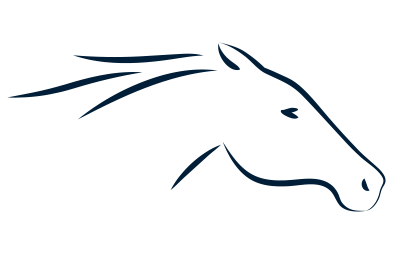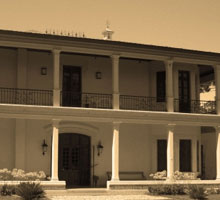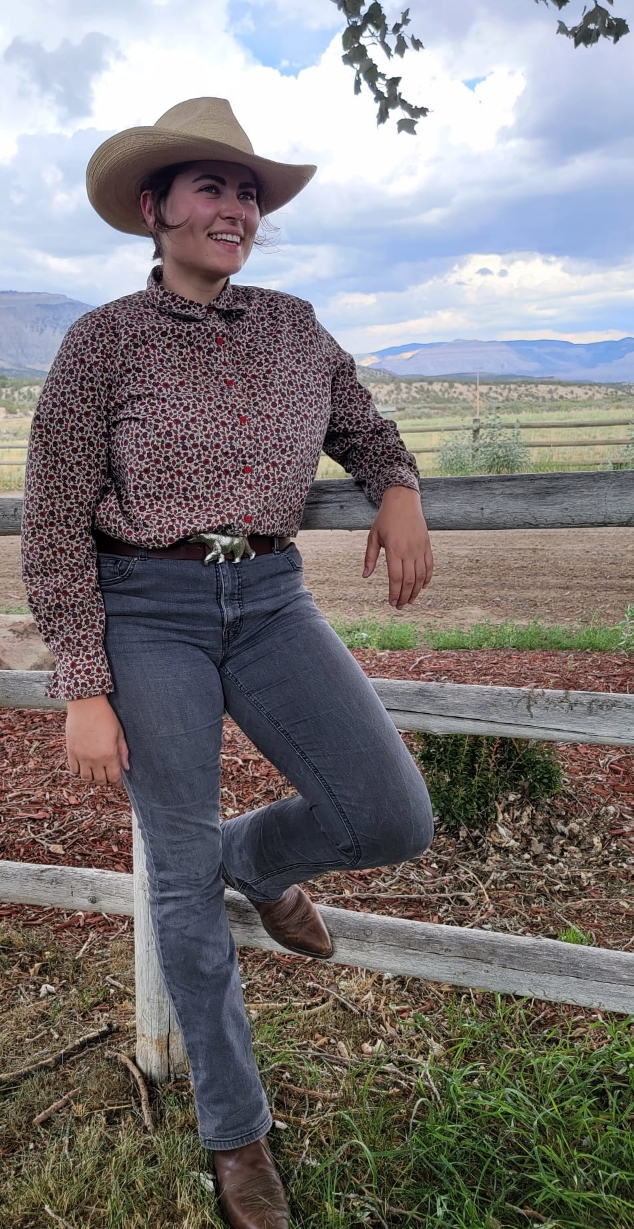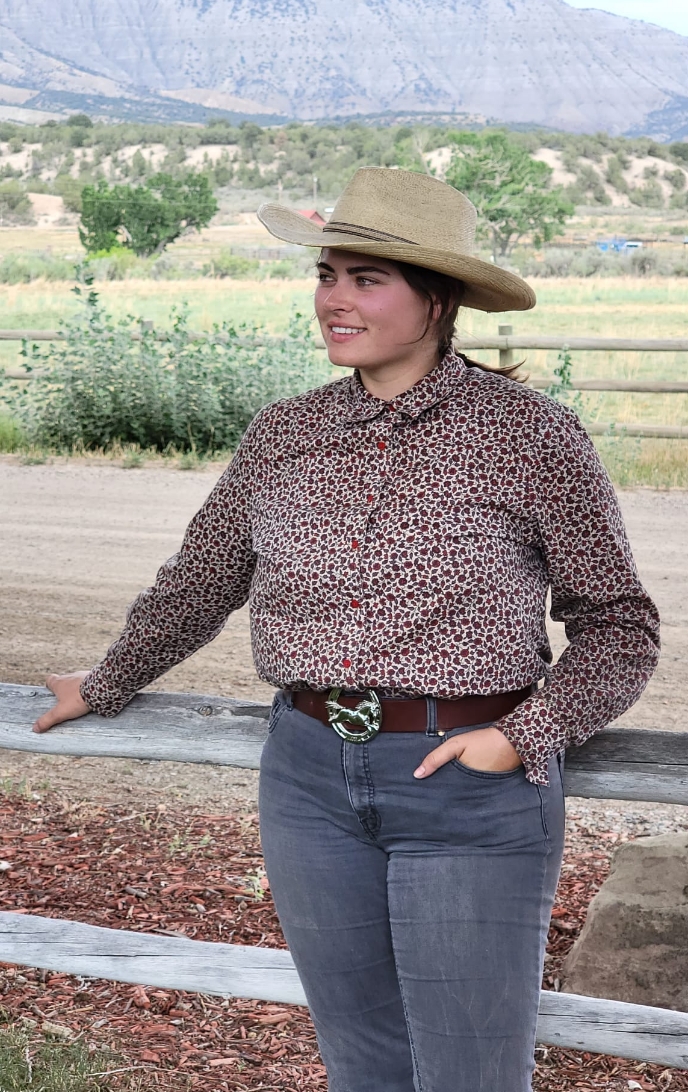
LIBERTAS LIFE, telling stories about
living authentically.
STORIES
Melissa Makous
Up close with Melissa Makous
LIBERTAS LIFE, telling stories about living authentically.
LIBERTAS LIFE travels to a large working ranch in the Western Slope of the Colorado Rockies.
The ranch and its two valleys are key ecosystems and wildlife corridors. The ranch is home to diverse fauna, including, bear and mountain lion and is next to one of the largest mustang herds in America.
Like so much of Utah and Colorado’s west, the ranch is part of the lands of Ute Indians. Spanish explorers visited the Western Slope in the mid-1700s introducing the horse to Ute Indians. The Ute Indians became one with the horse, transforming their lives, hunting practices and more. As farmers and miners settled into the area, the Ute were forced off their ancestral territory.
We meet with Melissa Makous, one of the Ranch Managers on a 350 square mile conservation, working ranch. Melissa lives on the ranch with her partner, Dakota, dogs, cats, some horses and two burros. They have settled into a cabin home, one of the original schoolhouses from the mid-1800s. Their home is nestled in a valley bottom near the creek, surrounded by views of mesas reaching 9,800 feet.
In her management role, Melissa uses regenerative practices for soil health and the ecosystem. The grasslands, watersheds and landscapes that have the capacity, if properly managed, with regenerative practices to address many urgent challenges such as drought, land misuses, water, and carbon sequestration. The ranch’s cattle serve as an analog for the elk and bison that once roamed this area. Each day sets out to re-establish the crucial relationship between large migrating herds and the land that once flourished with wetlands and fertile grasslands.
To be here is awe-inspiring. We saddle two horses near ranch headquarters and ride up valley towards the cattle herd. The quietness; only the sound of horse hooves, and bird calls.
LIBERTAS LIFE: Tell us a little about what you do here.
MELISSA: At its most basic, I am a rancher, a Livestock & Agriculture manager. During the growing season I am out on the land almost every day with the cattle, observing livestock health, wildlife, how the land is responding to animal impact. Observation is an essential part of this work. Most of what I do feels very creative, continually adapting to be better stewards. When I am not outside, I am working on growing the grass-fed beef business, which shares our work regenerating the land with the communities that surround us.
LIBERTAS LIFE: How did you end up working in this sector?
MELISSA: I grew up in the heart of Los Angeles, so I get this question often. I was not very connected to the natural world as a child, or even as a teenager, but I was drawn to its wonder, and I credit my grandmother for much of that. Growing up I visited her in Taos, New Mexico which really was the first place, the first land, where I saw the beauty of the natural world in that high desert.
I always had an affinity for animals, and so I was told I should be a veterinarian. Well, I did end up working with animals, but not in that capacity. When I started studying Agro-ecology, I was drawn to raising livestock and using them as a tool to restore desert landscapes that had been suffering from the removal of grazing animals and/or the mismanagement of them.
LIBERTAS LIFE: What would you say most motivates you to do what you do?

MELISSA: The bigger climate picture motivates me. These grasslands co-evolved with herds of grazing animals like elk and bison, and it excites me to know that with the right management we can graze our cattle to mimic this relationship and ultimately restore the soils and biodiversity that sustains humans, whether you live in a city or in a small rural town. Regenerative land management is the only tool we have right now to start reversing environmental damage. It is the most effective and scalable way to drawdown carbon and start slowing the effects of climate change. Rangelands, which comprise over 50% of the Earth’s surface, are essential for cycling carbon, as important as forests, so the potential there for carbon sequestration is huge.
A month after I started here, the Ranch went through a fire that impacted 140,000 acres, the biggest fire in Colorado history at the time. We moved the cattle to a safe area and went through the fire lines everyday to feed them. We observed firsthand, watching the flames move across the landscape for 7 weeks, with a couple Board Members and over 1,000 fire fighters stationed on the ranch. The fire impacted almost the entire area where we were planning to graze. I think that motivated me even more, as it became clear that livestock would be important now more than ever to assist in the post-fire restoration.
LIBERTAS LIFE: What were you doing before you came here that led you to this job?
MELISSA: Over the years I moved around working on different livestock operations around the country. Right before I came to Colorado, I was in Tennessee on former Vice President Al Gore’s farm. It was exciting to be involved in an operation doing cutting edge climate and ag research. My dream was to be doing dryland restoration with livestock, so I returned West.
LIBERTAS LIFE: Okay, so tell us a little about your background.
MELISSA: I lived in Los Angeles until I was 18 years old with my parents and my two sisters. It’s fun to have them out on the ranch and have them be a part of something so foreign to them, yet so deeply connected to their lives whether they know it or not. After high school I started college at Tulane University in New Orleans, thinking I was going to work in education. I got involved in an urban farming project and started to learn about the intersection of food and social justice and ended up transferring to UC Berkeley to study Agro-Ecology. I continued my involvement with local food justice centered groups and saw intimately how agriculture affects so many aspects of our lives. Later, I traveled to Mexico, Guatemala, and Nicaragua for six months visiting farms and seeing agro-ecology in practice. When I returned, I worked on farms and ranches around the U.S. Those experiences led me to see how connected agriculture is to the biggest existential threat we face, Climate Change. Now I spend my time working at this ranch that is devoted to discovering how to use regenerative agriculture at serious scale to protect ecosystems and produce healthy food.
LIBERTAS LIFE: If you had to name a few people that mentored or influenced you?
MELISSA: The first person that comes to mind is my professor, Clara Nichols. I took several courses with her, and she always stressed the concept of resilience, not just in ag systems, but in communities and oneself. That concept became a pillar in my life. Before I took on a management role here, every farm and ranch I worked on was led by women, so I feel grateful for that. I think that representation really mattered to me.
LIBERTAS LIFE: Did you have any life-changing experiences that put you on your path?
MELISSA: When I was 18, the first time I ate something I harvested - a radish. I was completely awestruck by what the soil and sun could create. Over the following years I worked with kids in gardens in urban areas and tried to share that same sense of wonderment. I still get that feeling everyday here. I am encouraged that in just two years after starting our Regenerative grazing program, we are seeing signs of the land healing. With just some proper management, the land’s capacity to respond and heal itself is truly awesome.
LIBERTAS LIFE: When you think of the future, what gives you a sense of hope?
MELISSA: Watching the food justice movement grow so rapidly over the years gives me hope. Knowing that we have the tools to restore our climate gives me hope. We don’t need to wait for decades of R&D of new technology that can capture carbon. We have animals, we have land, we know how to manage livestock to promote heathy soil and capture carbon. People are doing it all over the world and have been for thousands of years. Regenerative agriculture can play a huge part in stabilizing our climate, and we can start right now.
LIBERTAS LIFE: What’s next for you in your work?
MELISSA: This is what’s next for me, being part of this story. I feel grateful to be able to draw on the successes of so many before me. One thing I’ve learned is that context is key, and I’m excited to see how this project fits into our local town and its residents. Restoring this land is not separate from the community, and I am looking forward to seeing how they both thrive as we move forward. Regenerative agriculture is not just about ecology. If it is going to succeed at scale, it must also be regenerative economically and socially. I want to manage this land and business in a way that grows the health of the planet and the people that live here.”




 WORLD
WORLD





